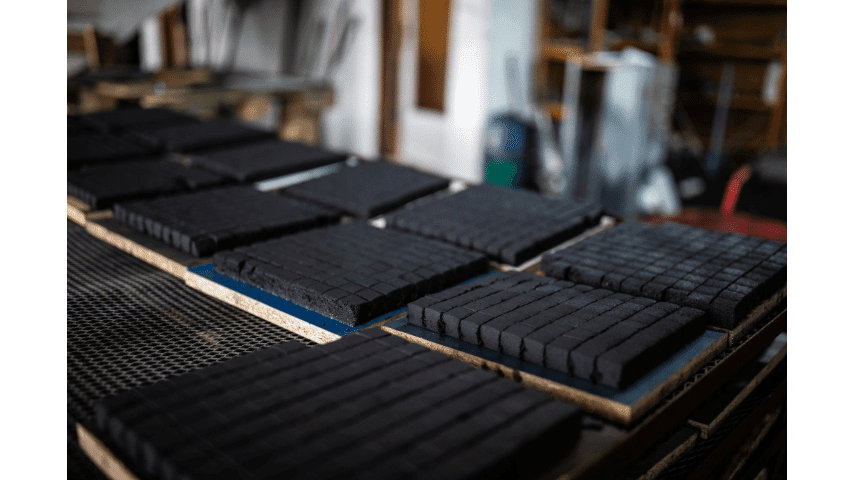When it comes to outdoor grilling and barbecuing, choosing the right type of charcoal is essential for achieving the perfect cook. Two of the most popular options are lump charcoal and briquettes. While both are used to fuel your grill, they have distinct differences in composition, burning characteristics, and overall performance. In this article, we’ll explore the differences between lump charcoal and briquettes, helping you decide which option best suits your grilling needs.
What is Lump Charcoal?
Lump charcoal is made directly from hardwood without any additives. It is produced by burning wood in a low-oxygen environment, which removes volatile compounds and leaves behind pure carbon. This process results in pieces of charcoal that vary in shape and size.
Characteristics of Lump Charcoal
- Natural Composition
Since it is made solely from wood, lump charcoal has no binders or fillers, making it a more natural option. - High Heat Output
Lump charcoal burns hotter and faster, which is ideal for searing and achieving those perfect grill marks. - Variable Shape and Size
The irregular pieces can create unique heat zones on the grill, which some grill enthusiasts appreciate for their ability to deliver a more authentic wood-fired flavor. - Less Ash
Generally, lump charcoal produces less ash than briquettes, meaning less cleanup after your grilling session.
What are Briquettes?
Briquettes, on the other hand, are manufactured charcoal products. They are made by compressing various materials such as wood charcoal, coal, starch, and other additives to ensure consistent size, shape, and burn time.
Characteristics of Briquettes
- Uniformity
Briquettes are uniform in shape and size, which allows for an even distribution of heat across the grill. - Steady Burn
Due to their manufactured nature, briquettes burn at a consistent rate and for a longer duration, making them ideal for low and slow cooking. - Additives
The inclusion of binders and fillers can sometimes affect the flavor profile. However, many modern briquettes are designed to minimize off-flavors. - More Ash Production
Briquettes tend to produce more ash than lump charcoal, which may require additional cleanup after grilling.
Key Differences Between Lump Charcoal and Briquettes
1. Composition
- Lump Charcoal
Pure hardwood charcoal with no additives. - Briquettes
Manufactured from wood charcoal, binders, fillers, and other additives.
2. Burn Temperature and Heat Output
- Lump Charcoal
Burns hotter and faster, making it ideal for searing and high-heat grilling. - Briquettes
Provides a steady and prolonged burn, which is better suited for slow-cooking or smoking.
3. Consistency and Control
- Lump Charcoal
Irregular shapes create uneven heat zones, which can be both an advantage and a disadvantage depending on your grilling style. - Briquettes
Consistent size and shape allow for more predictable and controlled heat distribution.
4. Flavor Impact
- Lump Charcoal
Imparts a natural, wood-fired flavor to the food, which many grilling enthusiasts prefer. - Briquettes
May impart slight chemical or off-flavors due to the additives, although many high-quality brands have minimized these effects.
5. Ash Production
- Lump Charcoal
Produces less ash, resulting in easier cleanup. - Briquettes
Tends to produce more ash, which may require more effort to clean up after grilling.
Pros and Cons
Lump Charcoal
Pros:
- Natural composition with no additives.
- Burns hotter, ideal for quick, high-heat grilling.
- Imparts authentic wood-fired flavor.
- Produces less ash.
Cons:
- Irregular shape can lead to uneven heat distribution.
- Burns faster, which might require more frequent refueling.
- Can be more expensive per pound compared to briquettes.
Briquettes
Pros:
- Uniform size and shape ensure even heat distribution.
- Provides a steady, long-lasting burn, suitable for low and slow cooking.
- Generally more economical for long grilling sessions.
- Easy to control the cooking temperature.
Cons:
- Contains binders and fillers that may affect flavor.
- Produces more ash, which can be cumbersome to clean.
- May not reach as high temperatures as lump charcoal.
Which Should You Choose?
The choice between lump charcoal and briquettes largely depends on your grilling style and preferences:
- For Searing and High-Heat Grilling
Lump charcoal is ideal due to its high heat output and natural flavor. - For Low and Slow Cooking or Smoking
Briquettes provide a steady, long-lasting burn and consistent heat distribution. - For Natural Flavor
If you prefer a pure wood-fired taste, lump charcoal is the better option. - For Budget-Friendly and Consistent Cooking
Briquettes are generally more cost-effective and offer predictable performance.
Conclusion
Understanding the differences between lump charcoal and briquettes is essential for making an informed decision about which type to use for your grilling needs. Lump charcoal offers a natural, high-heat option with authentic wood flavor and minimal ash, while briquettes provide a consistent, long-lasting burn ideal for slow-cooking.
By considering factors such as composition, burn characteristics, flavor, and convenience, you can choose the charcoal type that best suits your culinary style. Whether you’re a searing enthusiast or a low-and-slow smoker, both options have their unique benefits to enhance your grilling experience.
Siswa SMK Tunas Harapan Pati yang sedang magang sebagai SEO Specialist di CV. Rumah Mesin. Memiliki pengalaman mengembangkan aplikasi kesehatan, portal toko, dan game 2D berbasis Unity. Menguasai Android, PHP, MySQL, Unity, serta desain antarmuka profesional. Siap bekerja dalam tim maupun individu dengan semangat belajar tinggi.






